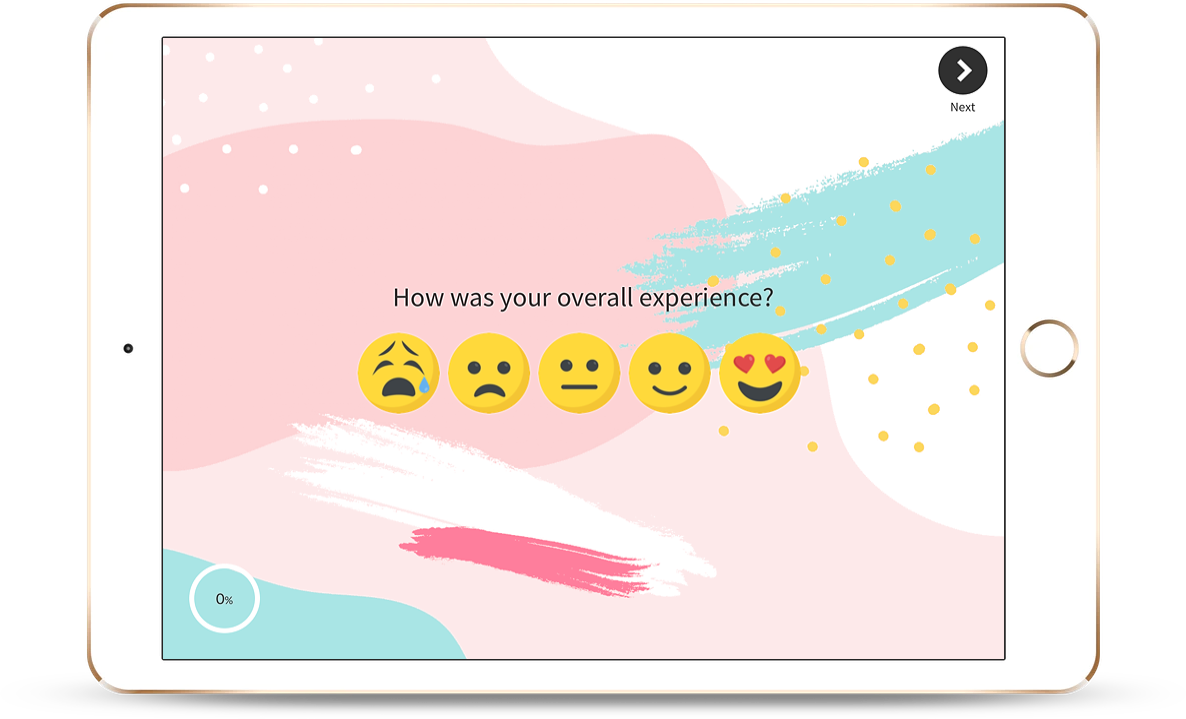Creating a Survey questionnaire can be tricky. Your survey is a set of questions that will help you determine the positives as well as negatives of your business, helping you work towards achieving growth. The survey ideally includes a mix of open-ended questions and close-ended questions.
Build and send a survey today 🔥
Choose from over 30+ question types, add your own themes and create amazing surveys that people love answering.

Related Article: Open Ended vs Closed-Ended Survey Questions
While using Closed-Ended Survey Questions, it has been observed that many companies make the mistake of incorporating too many dichotomous questions. Dichotomous Questions are questions with binary answers like Yes/No, True/False, Agree/Disagree and similar. Companies do this to get the benefit of these questions being simple easy and short. They are useful in such cases when there are only and only two possible answers.
For instance, you want to identify your product users among the visitors on your website or store. There it can be asked whether the respondents have actually used the products and services or not and accordingly survey logic can be applied that the customer would be presented with the whole Feedback survey or not. But in other purposes, it may be misleading and you wouldn't get the real customer insights.
Although, Dichotomous Questions seem like an easy choice, make customers fill surveys faster, boost survey responses and seem easier to analyze than others, there are many disadvantages of using these questions in your survey.
Let's learn the problem with these binary answer questions.
The Problem with Yes/No Questions (Dichotomous Questions)
While Dichotomous Questions are very easy to comprehend, they suffer from critical problems at both users’ and the analytics’ end. These kinds of questions tend to force the consumer or respondent to make a choice between two options, regardless of whether or not they truly agree with that choice. It is very likely that the customer would choose the option that doesn’t describe his actual feelings about your product or service. You eventually end up with incorrect analytic reports. There are several examples how this can occur. Let’s take an example of this question.
Would you purchase from us again?
- Yes
- No
The answer to this question depends on the mentality of the customer. Also to this, it also depends on the customer’s expectations from your brand.
Your customers can be as different as chalk and cheese. One might think – “I have purchased this one, and it wasn’t a bad experience. I might give it another shot.” He ticks ‘Yes’.
Another person registering the feedback might feel – “I have already purchased this one, and the experience wasn’t overwhelming. I would certainly not visit again.” He chooses ‘No’.
In this case, the same question has received two different answers because the customer wasn’t offered an option that rightly described his feelings. It is worth noting that the answer to this question varied depending on the customer’s expectations from the brand and not the quality of service. In other words, your question has been misinterpreted.
What is the alternative to Dichotomous Questions?
Dichotomous Questions are binding and don’t give customers the opportunity to share their opinions. In the above example, if customers were asked about their experience with the product and precise options would have been provided such as Pathetic, Bad, Neither Good nor Bad, Bad, and Excellent; or options would have been provided in the form of self explanatory emoticons; the customers would be able to give more accurate answers.

As a matter of fact, analyzing surveys require users to give precise feedbacks. If your feedback form questions fail to bring out the true feelings of the customer, then you aren't succeeding in collecting feedback effectively.
Alternatives to Dichotomous Questions to measure Customer Satisfaction and Loyalty
- CSAT: To measure Customer's Satisfaction regarding your products and services
- NPS: To measure Customer Loyalty towards your brand and company
- CES: To measure Customer's perceived effort towards a task or query

Other Alternatives to Dichotomous Questions
- Likert Scale: You can use Likert scale as matrix rating scale instead of Dichotomous questions. With Likert scale questions, you can ask the customers to rate the different parameters of their experience by giving them statements and asking them how much they agree to those. Give them five options - Strongly Agree, Agree, Neither Agree Nor Disagree, Disagree and Strongly Disagree.
- Button Questions: You can also ask button questions from your customers where customers have to select the button with the answer option they want to choose. They can be either be single choice radio buttons or also multiple choice buttons wherever required.
- Dropdown: You can also give your customers a pre-populated drop-down list from which they an select one answer.
- Picture Choice Questions: These questions are also a great way to ask feedback from customers. In this, you will provide picture options to your customers from which they will select their answer choice.
- Emoji Survey Questions: These questions are a part of smiley face surveys and allow respondents to select the emoji or emoticon that resonates best with their feelings or level of happiness. A happy emoji means they're satisfied with the service, whereas a frown would suggest dissatisfaction.
A survey created with the right questions is more likely to get you the feedback data you're looking for. Also read Tips to Create Effective Surveys to learn more about how to create effective surveys that get responses.
Final Thoughts
Dichotomous (yes/no) questions might look efficient, but they often strip away the depth and nuance you need to truly understand your customers. By replacing them with smarter alternatives like Likert scales, emoji-based responses, or CSAT/NPS/CES metrics, you gain far richer insights — and better decisions follow.
A well-crafted survey doesn’t just collect data. It unlocks growth.



.jpg)

.jpg)
.jpg)


.jpg)


